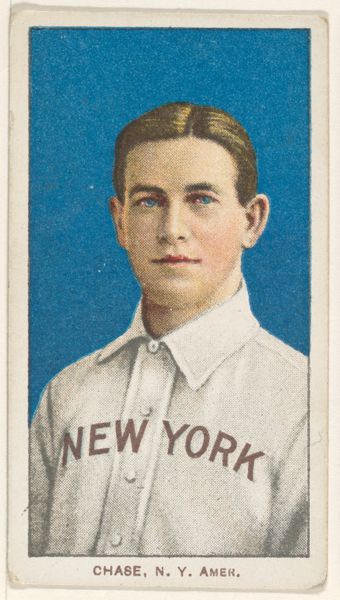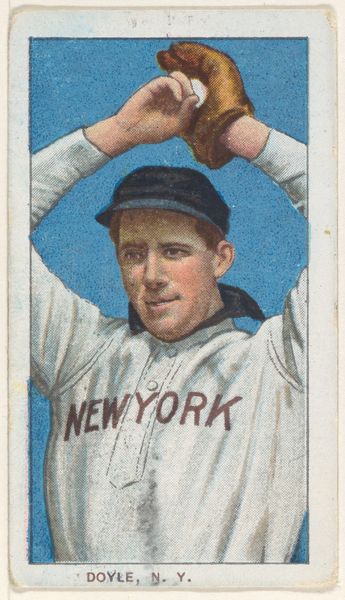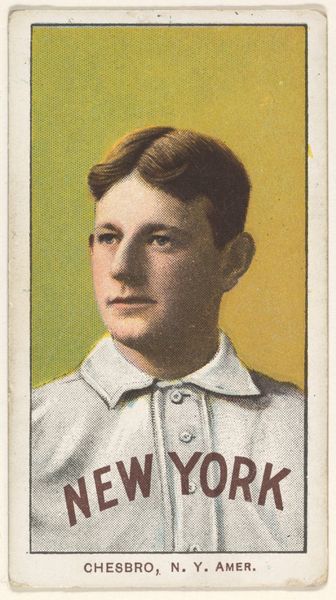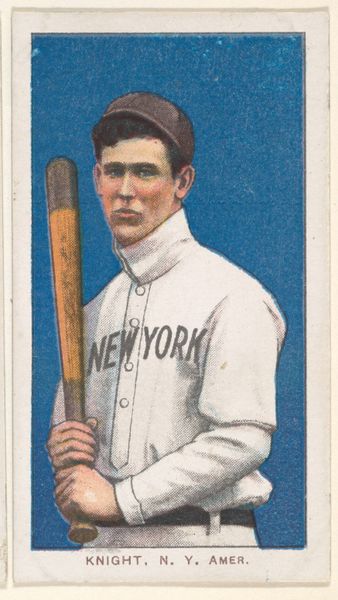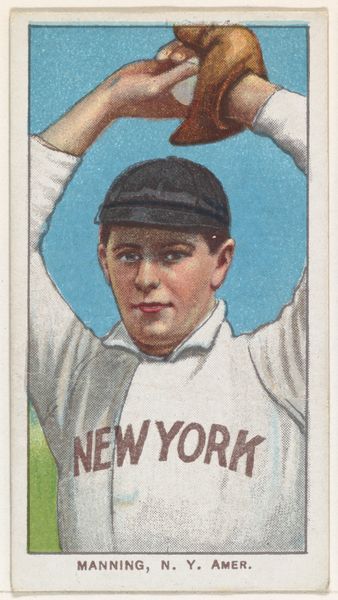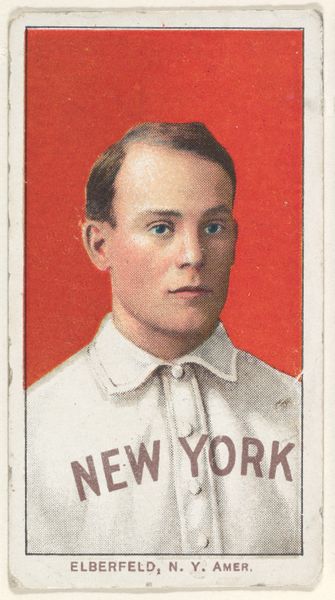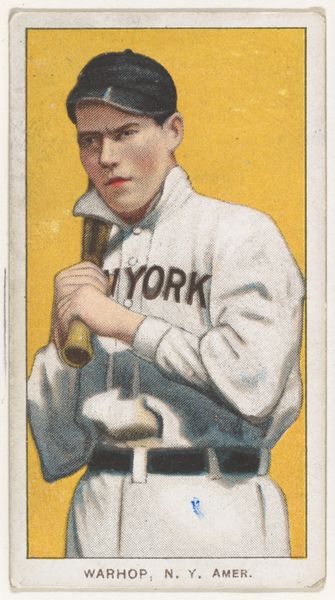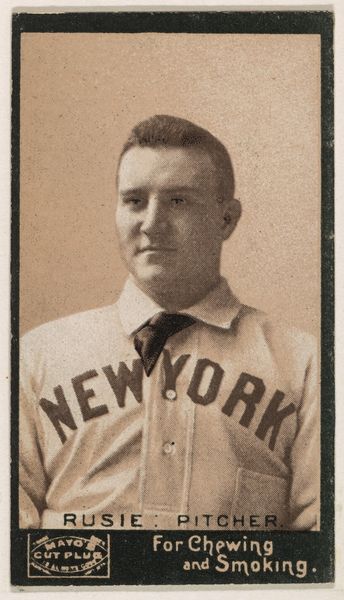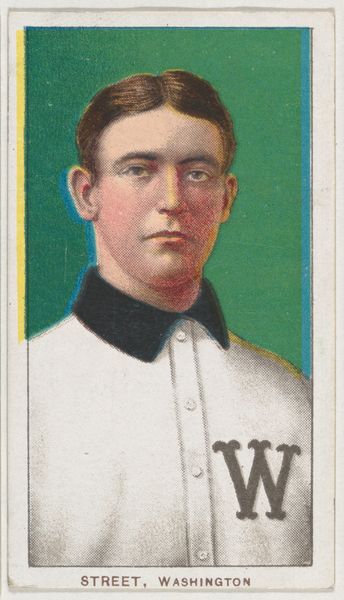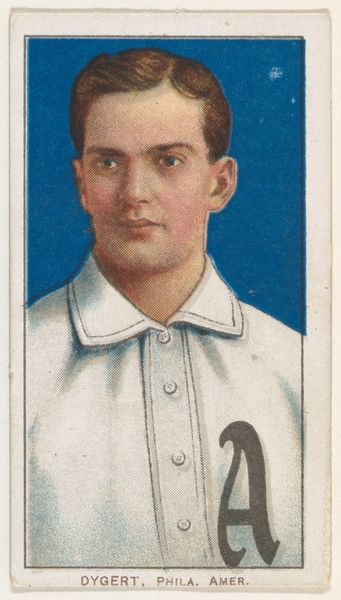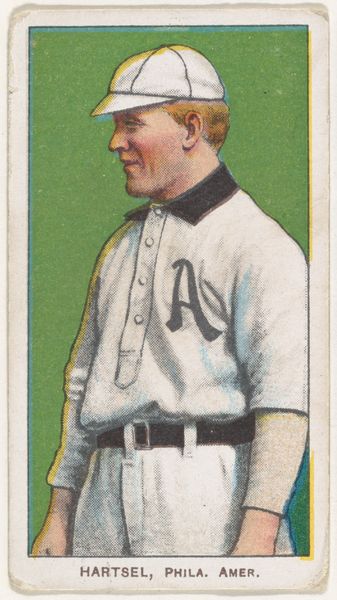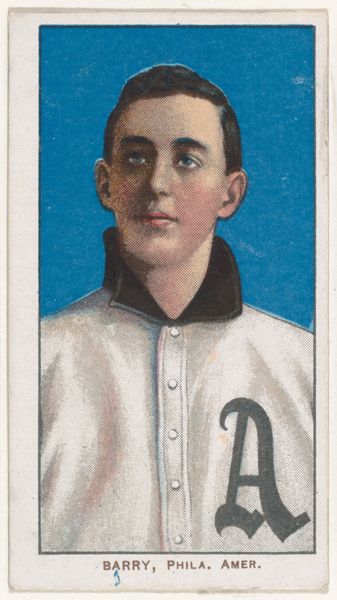
Knight, New York, American League, from the White Border series (T206) for the American Tobacco Company 1909 - 1911
0:00
0:00
Dimensions: Sheet: 2 5/8 x 1 7/16 in. (6.7 x 3.7 cm)
Copyright: Public Domain
Curator: What strikes me first is how quaint this baseball card seems—a product of the American Tobacco Company, circa 1909 to 1911. Editor: I am immediately drawn to its almost unsettling visual simplicity; a flatness across its color palette and its two-dimensional aesthetic, despite it technically being a photographic print. Curator: It's part of the T206 White Border series, showcasing Knight from the New York American League team. Baseball cards of this era weren’t just about the sport; they were intrinsically linked to industry, advertising, and even child labor, given the societal impacts of tobacco production. Editor: From a formal perspective, the composition is arresting in its symmetrical balance, where the bold typography acts almost like an aesthetic weight on the design of this baseball card—and, yes, I agree; the advertisement is indeed part of its semiotic and material function, as it creates multiple layers of interaction with its viewing public. Curator: Exactly, and you can't overlook how the distribution of these cards through tobacco products normalized tobacco use, targeting children and reinforcing the deeply rooted social norms of that time. Editor: Yet, the stylistic choice of presenting the "Knight" portrait in a stylized manner through carefully selected coloring and tonal variations elevates its cultural purpose beyond commercial advertisement—revealing more complex symbolic layers to consider and interpret in visual terms. Curator: Understanding the history surrounding the card is crucial to any complete viewing and speaks to so much more. It brings forward issues of corporate influence, health, and the role of sports in American identity at the beginning of the twentieth century. Editor: Agreed—through deconstructing visual forms within broader aesthetic considerations, combined with critical evaluation, more light can be cast in understanding our layered cultural narratives and its encoded, nuanced, and evolving message(s).
Comments
No comments
Be the first to comment and join the conversation on the ultimate creative platform.
